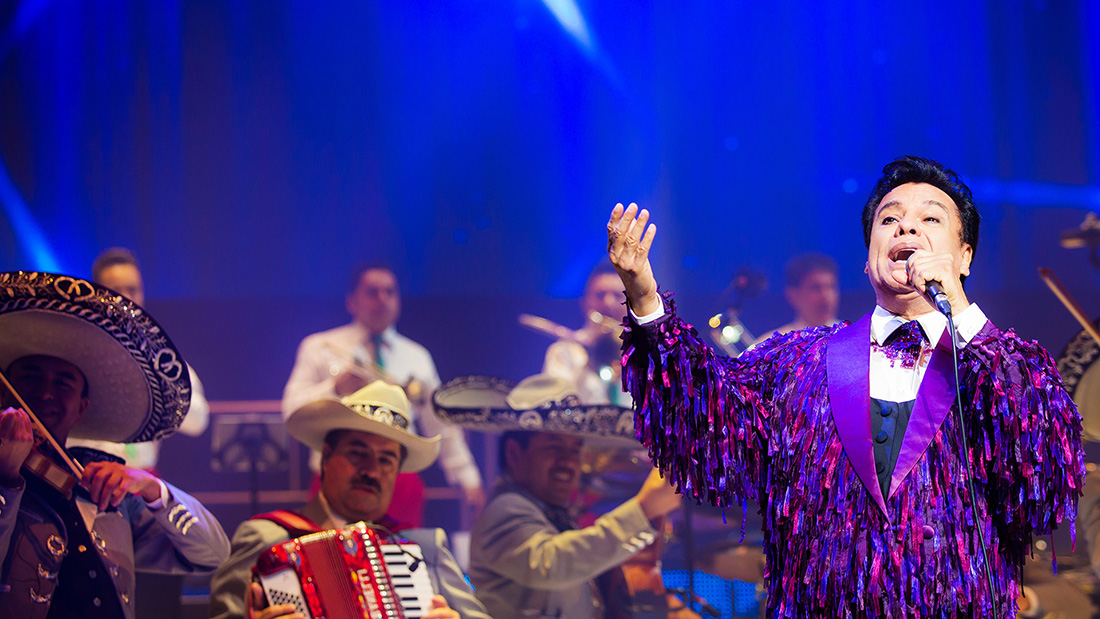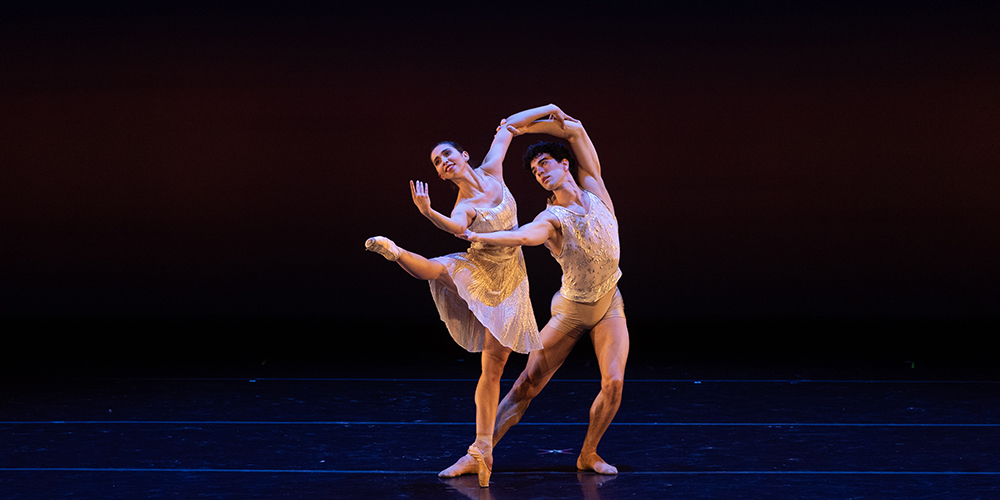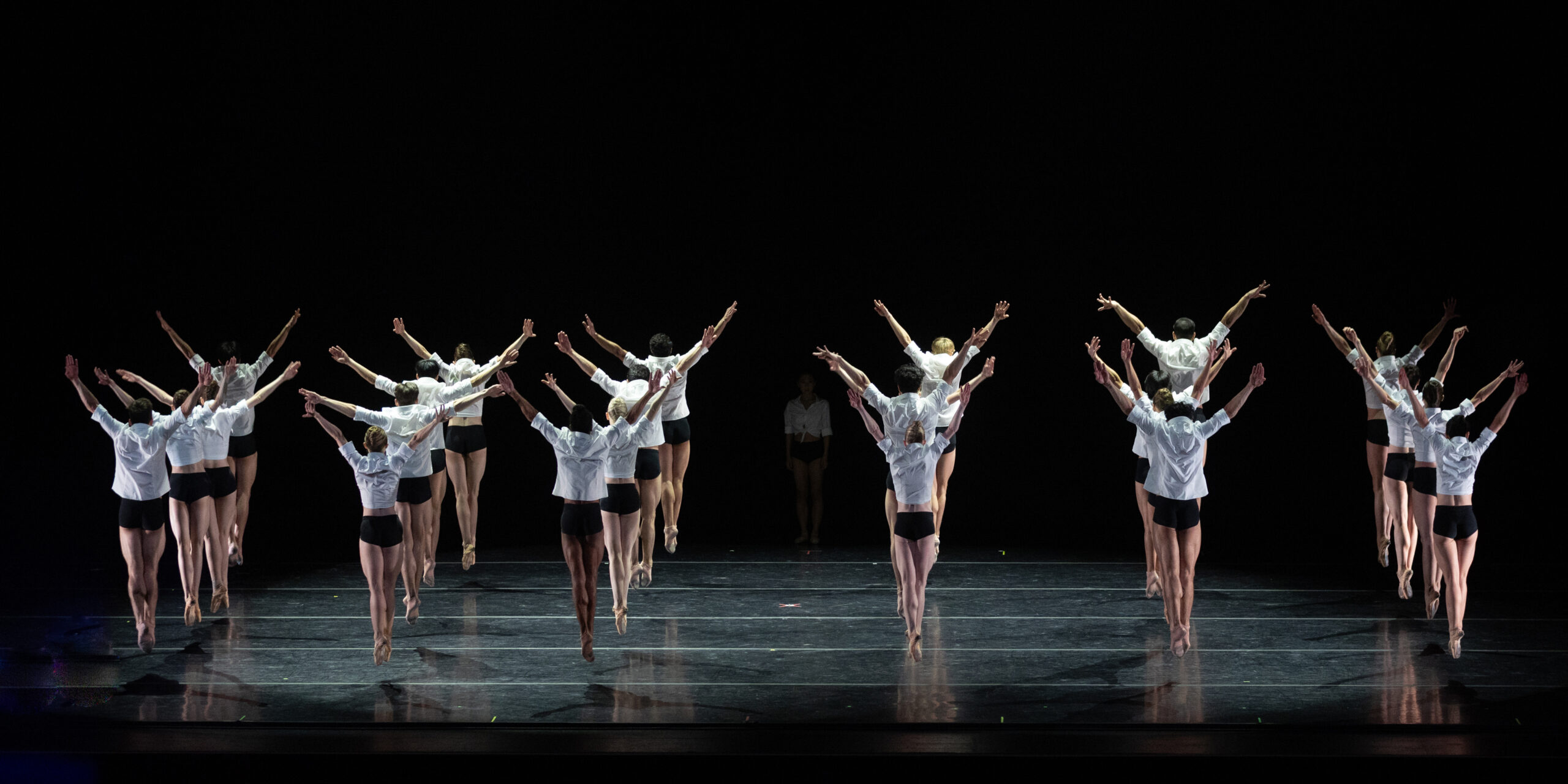To read this article in Spanish, please keep scrolling below! | Para leer este artículo en español, sigue el curso para abajo!
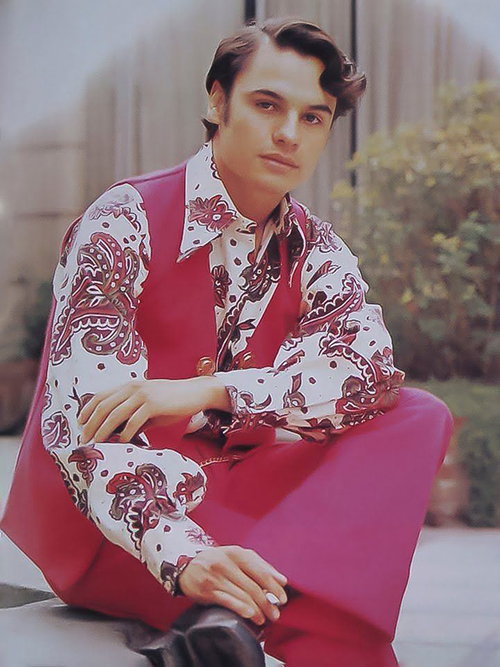
A man of incredible talent and resilience, Juan Gabriel, known widely as Juanga, left behind a remarkable legacy in Latin American culture as one of the best and most prolific Mexican composers and singers of all time.
Juanga was born on January 7, 1950 as Alberto Aguilera Valadez in Parácuaro, Michoacán, Mexico. He had a very tough childhood from the beginning, especially as the youngest of 10 siblings in a family who struggled to make their living as farmers. While Juanga was just an infant, his father, Gabriel Aguilera Rodríguez, was interned in a psychiatric hospital and his family could no longer maintain their farm. Faced with a multitude of hardships, his mother, Victoria Valadez Rojas, moved the family to Ciudad Juárez, Chihuahua, where she placed a 4-year-old Juanga at the El Tribunal boarding school, an orphanage, while the rest of the family tried to find work and survive.
During his formative years at El Tribunal, Juanga met his first mentor, Juan Contreras, who introduced him to music and singing. Contreras nurtured Juanga’s natural talent and inspired him to write his first song. At the age of 13, Juanga was desperate to leave the confines of the boarding school and escaped. He went on to live with Contreras for a year but left once again, hoping to return to his mother and family.
Upon returning home, Juanga worked during the day to help his family by washing cars and serving at restaurants, but he continued to write and sing songs at night…much to his mother’s dislike. At 14, he heard singing at a local Methodist Church which piqued his interest. There, Juanga met Sisters Leonor and Beatriz Berúmen, who took him in and provided a safe haven. He joined their choir and helped out by cleaning the church. After touring with the choir for a while, he decided to leave and return to Juárez and pursue his own music.
At 15, Juanga debuted on the Notivista telelvision show Noches Rancheras under the stage name Adán Luna and sang the song María la Bandida by José Alfredo Jiménez. For the next two years, he worked as a singer at local bars in town which was challenging since he was underage. Juanga eventually caught the eye of a record company executive while singing at a bar called Noa Noa, a name that would later become immortalized with his song El Noa Noa. He traveled to Mexico City in hopes of an opportunity with that record company, but was soon rejected. He then returned to Juárez and continued to work as a singer. At 18, he tried to get signed with a record label and was hired by Eduardo Magallanes at RCA Victor to work as a backing vocalist for notable artists Roberto Jordan, Angélica María, and Estela Núñez. In 1970, he resigned from the label because he was not making enough money and, once again, returned to working at the bars in Juárez.
Encouraged by his friends to not give up, Juanga returned to Mexico City once more. With very little money to support himself, he slept in bus and train stations and took small gigs wherever he could find them to get by. During this time, he was wrongly accused of robbery and imprisoned at Palacio de Lecumberri for 1.5 years. During his internment, he wrote several songs, which caught the attention of prison warden Andrés Puentes Vargas. Vargas recognized his talent and introduced Juanga to Mexican singer and actress Enriqueta Jiménez “La Prieta Linda.” Instantly impressed and moved by Juanga’s background and story, La Prieta Linda helped Juanga navigate the legal process and was instrumental in his release from prison for insufficient evidence.
After Juanga’s release, La Prieta Linda helped him sign a recording contract at RCA Victor, where he began using the stage name Juan Gabriel, honoring both his late mentor and father. In 1971, at 21 years old, Juanga wrote and released his first studio album El Alma Joven with his first single No Tengo Dinero. The song was a massive hit and the album was certified as gold by the Asociación Mexicana de Productores de Fonogramas y Videogramas.

Juanga’s fame and popularity continued to grow over the decades with one chart-topping success after another, working across an array of genres including pop, Mariachi, rock, and disco. His music, however, wasn’t the only thing that made “Juan Gabriel.” He was an entertainer to the core. From the way he connected to his audience, even in sold-out arenas across the world, to his perfectly coiffed pompadour and colorful and often glittery outfits, Juan Gabriel was magnetic to watch on stage.
Over the course of his career, Juan Gabriel wrote over 1,500 songs, released 30 studio albums, and sold over 100 million albums worldwide. He received numerous awards and accolades including the Lo Nuestro Excellence Award in 1991, the Latin Songwriter of the Year Award from the American Society of Composers, Authors, and Publishers in 1995, 1996, and 1998, and was a six-time Grammy nominee. In 1996, he was inducted into the Billboard Latin Music Hall of Fame and in 2009 was given a star on the Hollywood Walk of Fame!
One of the most notable moments in Juan Gabriel’s life was in 1990 when he made history as the first non-classical act to perform at Mexico City’s illustrious Palacio de Bellas Artes. The performance was a defining cultural moment in Mexico and ultimately spoke to the legacy that Juan Gabriel left behind, a celebration of Mexico and all that it represents. This sentiment was said perfectly in Juanga’s 1999 interview with The Los Angeles Times, “Mexican music must be defended with vigilance…my thoughts, my feeling, my spirit, they are all in Spanish.”
His unexpected passing in 2016 left people mourning across the world. When remembering Juan Gabriel, Mexico’s Former President, Enrique Pena Nieto said, “A voice and talent that represented Mexico. His music is a legacy for the world.” As one of Mexico’s most successful artists and one of the most influential Latino artists of all time, Juan Gabriel remains an icon, whose music and artistic genius continues to be celebrated and beloved by people all over the world.

[/av_textblock]
[av_heading heading=’La Serie de Composiciónes: Una Mirada a Juan Gabriel’ tag=’h1′ link_apply=” link=’manually,http://’ link_target=” style=” size=” subheading_active=” subheading_size=’15’ margin=” padding=’10’ color=” custom_font=” custom_class=” id=” admin_preview_bg=” av-desktop-hide=” av-medium-hide=” av-small-hide=” av-mini-hide=” av-medium-font-size-title=” av-small-font-size-title=” av-mini-font-size-title=” av-medium-font-size=” av-small-font-size=” av-mini-font-size=”][/av_heading]
[av_textblock size=” font_color=” color=” av-medium-font-size=” av-small-font-size=” av-mini-font-size=” av_uid=’av-kstefhae’ id=” custom_class=” admin_preview_bg=”]

Un hombre de increíble talento y resiliencia, Juan Gabriel, conocido ampliamente como “Juanga”, dejó un legado notable en la cultura latinoamericana como uno de los mejores y más prolíficos compositores y cantantes mexicanos de todos los tiempos.
Juanga nació el 7 de enero de 1950, llevando por nombre Alberto Aguilera Valadez en Parácuaro, Michoacán, México. Vivió una infancia muy dura desde el principio, fue el menor de 10 hermanos de una familia que luchaba por ganarse la vida como agricultores. Mientras Juanga era solo un bebé, su padre, Gabriel Aguilera Rodríguez, fue internado en un hospital psiquiátrico y su familia ya no podía mantener su finca.
Con una vida de muchas privaciones, su madre, Victoria Valadez Rojas, trasladó a la familia a Ciudad Juárez, Chihuahua, donde colocó a Juanga de 4 años de edad en un internado llamado El Tribunal, mientras que el resto de la familia intentaba de muchas formas encontrar trabajo para poder sobrevivir.
Durante sus años de formación en el orfanato El Tribunal, Juanga conoció a su primer mentor, Juan Contreras, quien lo introdujo en la música y el canto. Contreras nutrió el talento nato de Juanga y lo inspiró a escribir su primera canción. A los 13 años, Juanga estaba desesperado por salir de los confines del internado y escapó, se fue a vivir con su mentor durante un año, para después con la esperanza de volver con su madre y su familia buscar un reencuentro.
Al regresar a casa, Juanga trabajó durante el día para ayudar a su familia lavando autos y sirviendo en restaurantes, pero continuó escribiendo y cantando por las noches. A los 14 años, escuchó cantar en una iglesia metodista local, lo que despertó su interés. Allí, Juanga conoció a las hermanas Leonor y Beatriz Berúmen, quienes lo acogieron y le brindaron un refugio seguro. Se unió a su coro y ayudó limpiando la iglesia. Después de una gira con el coro por un tiempo, decidió irse y regresar a Juárez y dedicarse a su propia música.
A los 15 años, Juanga debutó en el programa de televisión Notivista Noches Rancheras bajo el nombre artístico de Adán Luna y cantó la canción María la Bandida de José Alfredo Jiménez. Durante los siguientes dos años, trabajó como cantante en bares locales de la ciudad, lo cual fue un desafío ya que era menor de edad. Juanga finalmente llamó la atención de un ejecutivo de una compañía discográfica mientras cantaba en un bar llamado Noa Noa, nombre que luego quedaría inmortalizado con su canción El Noa Noa. Viajó a la Ciudad de México con la esperanza de tener una oportunidad con esa disquera, pero pronto fue rechazado. Luego regresó a Juárez y continuó trabajando como cantante. A los 18 años, trató de firmar con un sello discográfico y fue contratado por Eduardo Magallanes en RCA Victor para trabajar como corista de los notables artistas Roberto Jordan, Angélica María y Estela Núñez. En 1970, renunció al sello porque no ganaba lo suficiente y una vez más, volvió a trabajar en los bares de Juárez.
Animado por sus amigos a no darse por vencido, Juanga regresó una vez más a la Ciudad de México. Con muy poco dinero para mantenerse a sí mismo, dormía en las estaciones de autobús y tren y tomaba pequeños conciertos donde pudiera sacar dinero para salir adelante. Durante este tiempo, fue acusado injustamente de robo y encarcelado en el Palacio de Lecumberri durante un año y medio. Durante el tiempo que estuvo preso, escribió varias canciones, que llamaron la atención del alcaide de la prisión, Andrés Puentes Vargas. Vargas reconoció su talento y presentó a Juanga a la cantante y actriz mexicana Enriqueta Jiménez “La Prieta Linda”. Instantáneamente impresionada y conmovida por los antecedentes y la historia de Juanga, La Prieta Linda ayudó a Juanga a navegar el proceso legal y fue fundamental en su liberación de la prisión por falta de pruebas.
Después de la liberación de Juanga, La Prieta Linda lo ayudó a firmar un contrato de grabación en RCA Victor, donde comenzó a usar el nombre artístico de Juan Gabriel, en honor a su difunto mentor y padre. En 1971, a los 21 años, Juanga escribió y editó su primer disco de estudio “El Alma Joven” con su primer sencillo No Tengo Dinero. La canción fue un gran éxito y el álbum fue certificado como oro por la Asociación Mexicana de Productores de Fonogramas y Videogramas.
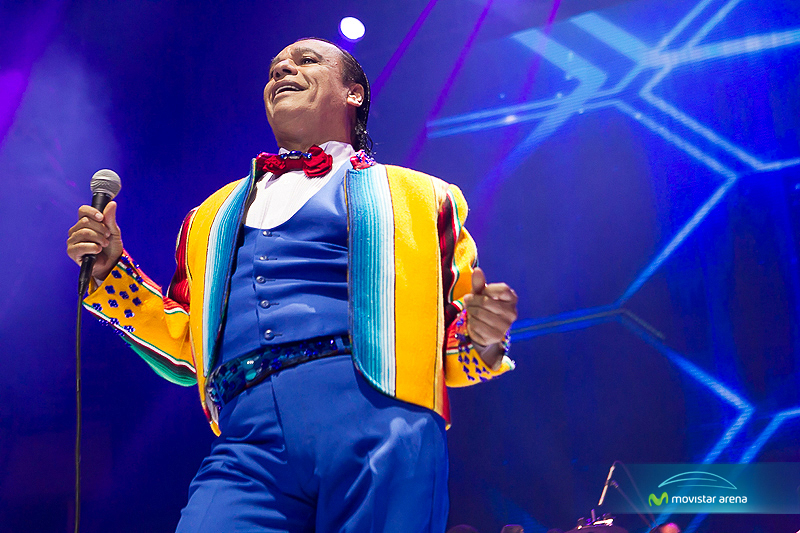
La fama y la popularidad de Juanga continuaron creciendo a lo largo de décadas con un éxito tras otro éxito, colocándose en el Núm. 1 de popularidad en el público, incursionando en una variedad de géneros que incluyen pop, mariachi, rock y disco. Sin embargo, su música, no fue lo único que hizo famoso a “Juan Gabriel”, si no también, su personalidad, carisma y animación en cada una de sus presentaciones, desde la forma que conectaba con su público, en estadios con entradas agotadas en todo el mundo, con su peculiar forma de vestir con atuendos coloridos y a menudo brillantes, hasta su copete perfectamente peinado, Juan Gabriel cautivaba al público al verlo en el escenario.
A lo largo de su carrera, Juan Gabriel escribió más de 1,500 canciones, lanzó 30 álbumes de estudio y vendió más de 100 millones de álbumes en todo el mundo. Recibió numerosos premios y reconocimientos, incluido el Premio Lo Nuestro a la Excelencia en 1991, el Premio al Compositor Latino del Año de la Sociedad Estadounidense de Compositores, Autores y Editores en 1995, 1996 y 1998, y fue nominado seis veces al Grammy. En 1996, fue incluido en el Salón de la Fama de la Música Latina de Billboard y en 2009 recibió una estrella en el Paseo de la Fama de Hollywood.
Uno de los momentos más notables en la vida de Juan Gabriel fue en 1990 cuando hizo historia como el primer acto no clásico que se presentó en el ilustre Palacio de Bellas Artes de la Ciudad de México. Esta presentación fue un momento cultural que trascendió dejando su legado en México. Este sentimiento se expresó perfectamente en la entrevista de Juanga en 1999 con The Los Angeles Times: “La música mexicana debe defenderse a capa y espada, mis pensamientos, mis sentimientos, mi espíritu, todos están en español”.
Su inesperado fallecimiento en 2016 dejó a personas de luto en todo el mundo. Al recordar a Juan Gabriel, el entonces presidente de México, Enrique Peña Nieto dijo: “Una voz y un talento que representó a México, su música es un legado para el mundo”. Como uno de los artistas más exitosos de México y uno de los artistas latinos más influyentes de todos los tiempos, Juan Gabriel sigue siendo un ícono, cuya música y genio artístico continúan siendo celebrados y amados por personas de todo el mundo.
